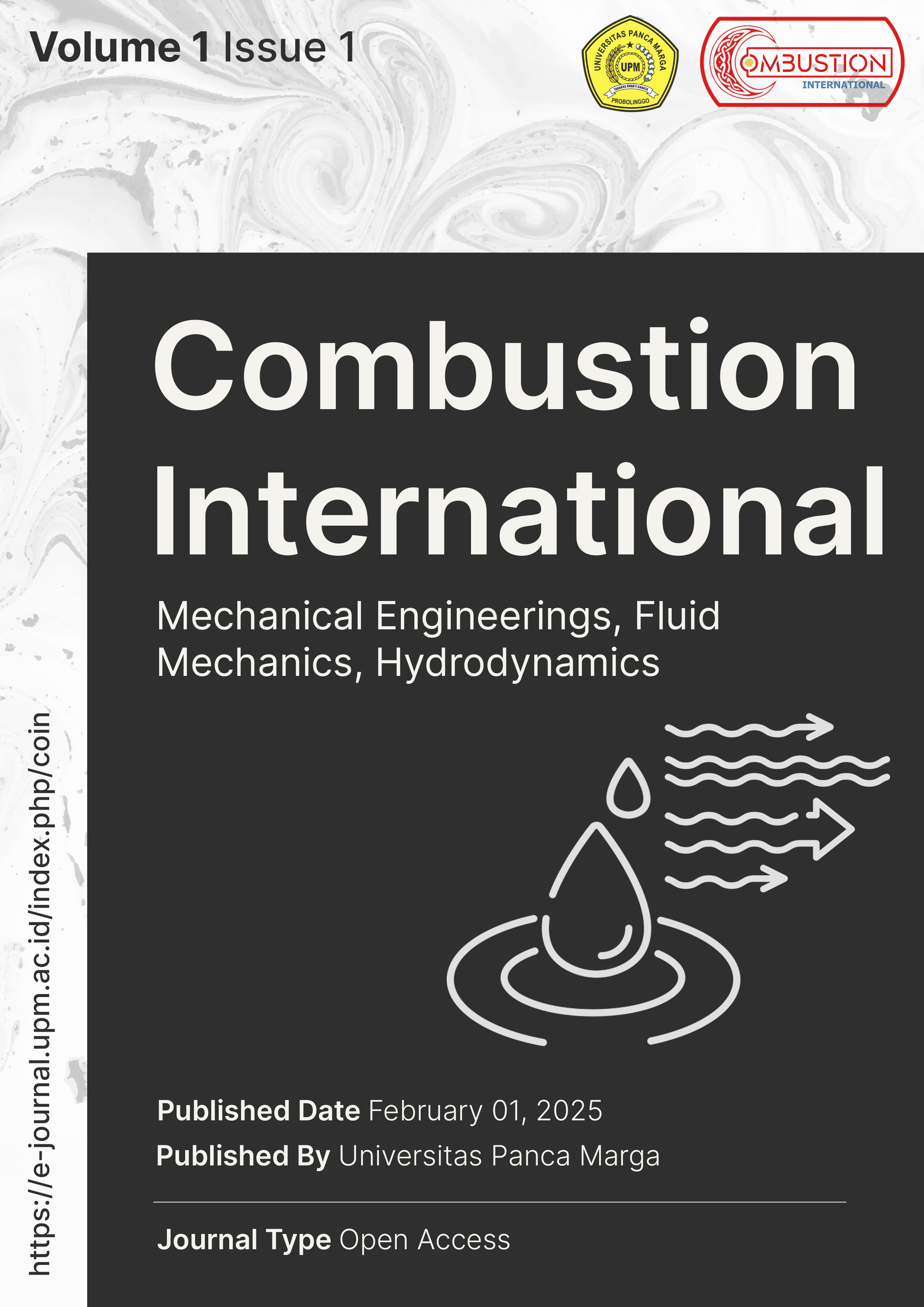Influence of Impeller Blade Count on Fluid Pressure and Efficiency of Centrifugal Pumps
DOI:
https://doi.org/10.51747/coin.v1i1.111Keywords:
Centrifugal Pump, Impeller Blade Count, Fluid Pressure, Vacuum Pressure, Pump EfficiencyAbstract
The impeller plays a critical role in the operation of centrifugal pumps, facilitating the transfer of fluids through pipes by adding energy to the liquid being pumped. This component operates based on creating a differential pressure between the suction and discharge phases. The primary objective of this study is to investigate the impact of varying impeller blade counts on fluid pressure, vacuum pressure at the suction inlet, and the overall efficiency of centrifugal pumps. An experimental approach was employed, analyzing impellers with four and six blades, followed by descriptive data analysis. The results demonstrated that with an increase in the number of blades from four to six, the fluid pressure increased from 7 Psi to 10 Psi, while the vacuum pressure increased from 38 cmHg to 46 cmHg, respectively. These findings suggest that a higher blade count improves fluid lift, thereby enhancing both vacuum and fluid flow pressures at a constant pump shaft speed. This study offers valuable insights into optimizing centrifugal pump performance by adjusting impeller configurations, which can contribute to more efficient fluid transfer systems in various industrial applications.





